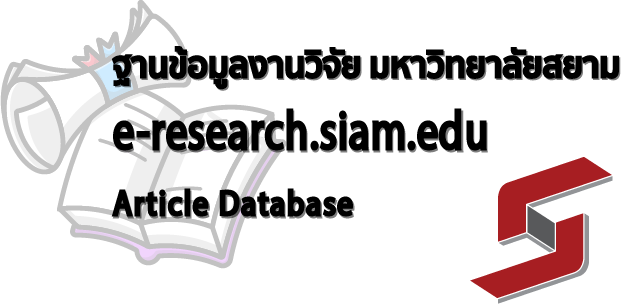- KB Home
- หลักสูตรระดับบัณฑิตศึกษา|Graduate Schools
- หลักสูตรปริญญาเอก|Doctoral Degree
- Ph.D. in Management
- The Competitive Advantage Model of China’s “Double First-Class” University Libraries from Knowledge-Based Dynamic Capabilities
Title: The Competitive Advantage Model of China’s “Double First-Class” University Libraries from Knowledge-Based Dynamic Capabilities
Author: Ms. Xue Jingjing
Advisor: รศ.ดร. เฉลิมเกียรติ วงศ์วนิชทวี – Assoc. Prof. Dr. Chalermkiat Wongvanichtawee
Degree: Doctor of Philosophy Program in Management
Major: Ph.D. in Management
Faculty: Graduate School
Academic year: 2024
Published: Journal of Roi Kaensarn Academi Vol. 9 No. 9 September 2024, pp.270-285 Click PDF
Abstract
With a focus on improving national science and technology, universities and their libraries must actively form and maintain competitive advantages to support university teaching and research. The “Double First-Class” library is central to sharing knowledge resources, developing talented teams, and enhancing students’ innovative abilities, which are essential for growth. The aims of this study are:(1) To investigate the factors of knowledge-based dynamic capabilities through service innovation that contribute to university libraries’ competitive advantage; (2) To examine the effect of these capabilities and service innovation factors on the competitive advantage of university libraries; (3) To develop a competitive advantage model for university libraries based on knowledge-based dynamic capabilities through service innovation.
The effect of knowledge-based dynamic capabilities on China’s “Double First- Class” university libraries’ competitive advantage was explored, focusing on the mediating role of service innovation. A mixed-method research approach was employed, and 420 valid questionnaires were collected from these libraries, and data were analyzed using SPSS 26.0 and AMOS 23.0 for reliability and validity. Pearson correlation analysis was implemented, leading to the construction of a structural equation model. In-depth interviews were conducted with nine key informants, including department directors and deputy directors, to gather insights on how these capabilities can enhance competitive advantages and support the quantitative data analysis.
The findings indicate that knowledge-based dynamic capabilities directly influence the competitive advantage of university libraries, with service innovation acting as a mediator in this relationship. The study’s theoretical contribution lies in providing effective strategies to enhance the competitive advantage of Chinese university libraries and establishing a model based on knowledge-based dynamic capabilities. The study suggests that university library managers should prioritize these capabilities in service innovation and apply the competitive advantage model to real-world situations. Future research should also consider external factors such as government policies and external technologies affecting libraries.
Keywords: knowledge-based dynamic capabilities, service innovation, competitive advantage, “Double first-class” university library
The Competitive Advantage Model of China’s “Double First-Class” University Libraries from Knowledge-Based Dynamic Capabilities / –
6319200003 – Ms. Xue Jingjing 2567 (2024) The Competitive Advantage Model of China’s “Double First-Class” University Libraries from Knowledge-Based Dynamic Capabilities วิทยานิพนธ์ (Thesis), Advisor: รศ.ดร. เฉลิมเกียรติ วงศ์วนิชทวี – Assoc. Prof. Dr. Chalermkiat Wongvanichtawee, ปริญญาเอก (Doctorate Degree), บัณฑิตวิทยาลัย (Graduate School), ปรัชญาดุษฎีบัณฑิต สาขาวิชาการจัดการ – Doctor of Philosophy Program in Management, ปร.ด. การจัดการ – Ph.D. in Management, Bangkok: Siam University


